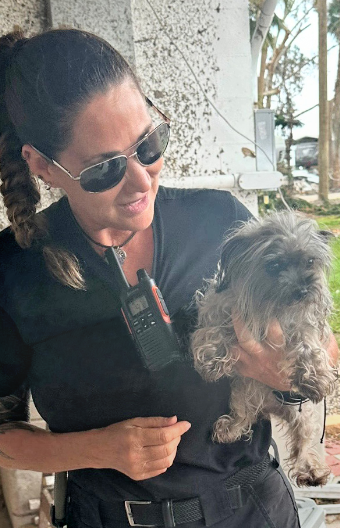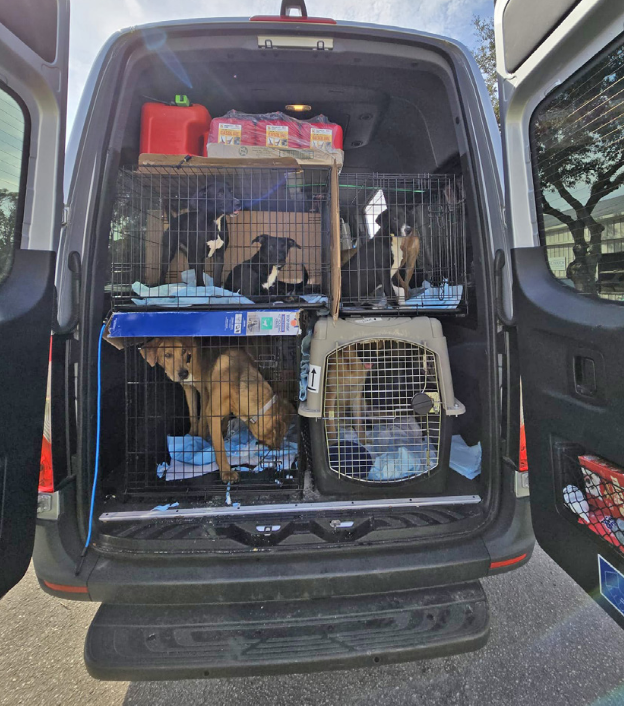Preparing Pets for a Disaster
Preparing your pet for a disaster isn’t just about gathering supplies—it’s about building a mindset of readiness. Start small by assembling a basic kit and practicing your plan, then refine it over time. Your pet’s safety depends on your proactive steps today. By following this guide, you can keep your pets safe before, during, and after a disaster.
Before a Disaster
Carriers: Have a secure carrier for each pet. For cats, ensure the carrier is large enough to accommodate a small cardboard box for a litter pan.
Identification & Documentation:
Take clear frontal and profile photos of your pets. Print multiple copies.
Photograph any unique markings for identification.
Keep a copy of each pet’s medical records, including rabies and kennel cough vaccination certificates.
Familiarization with Carriers:
Help pets get comfortable with their carriers by placing them inside with treats or food.
Train them to enter quickly in case of an emergency.
Evacuation Planning
Contact out-of-area clinics, kennels, and pet-friendly hotels to check their policies.
Plan special evacuation measures for livestock and ensure horses load easily into trailers.
Microchip pets and register the chip.
Arrange with neighbors, friends, or family to help evacuate or care for your pets if you’re unable to.
Provide them with written permission for veterinary treatment.
Emergency Alerts
Place pet rescue stickers on windows or doors to notify emergency responders of pets inside.
Go-Kit for Pets
Prepare a 7-day emergency kit including:
Food & water
Bowls
Leashes & ID collars (breakaway collars for cats)
First aid kit & medications
Copies of medical records
Comfort items (toys, blankets)
Muzzle (if necessary)
Cleaning supplies
Photo of you with your pet for identification
During a Disaster
Confine pets safely:
Keep outdoor animals in an accessible, safe area.
Secure indoor pets in a small room like a bathroom.
Evacuate with pets if possible.
Load disaster kit, emergency gear, and animals.
Turn off electricity, water, and gas.
Lock up and leave safely.
Provide ample food and water.
Place pets in a secure, high room (avoid basements in flood-prone areas).
Remove breakables and separate dogs from cats.
Never leash or chain a pet inside.
Post contact information visibly for responders.
Leave windows slightly open for potential escape if necessary.
If You Find a Deceased Pet:
Document the pet’s ID, collar, or markings and notify local animal control.
To download this information - including a Pet Disaster Preparedness Kit with critical needs checklist, please click below:
Niki Dawson
Niki currently works for Paws of War as the Director of Animal Welfare and Logistics. Niki is a Bridgewater resident.
Niki has been an animal welfare administrator for 35 years, serving as the director of Disaster Services for a national animal organization. She is the co-founder of the NJ State Animal Resource Team and the former director of both Hudson and Somerset County Animal Response Teams.
Niki has deployed to more than two dozen natural disasters in the United States, most recently Hurricanes Helene and Milton and the California wildfires, and has served as a consultant for numerous animal welfare agencies around the country for disaster preparedness.
What to do after a Disaster
Safety First:
Keep pets leashed until they adjust to changed surroundings.
Be cautious of displaced wildlife (e.g., snakes, raccoons).
Watch out for downed power lines and other hazards.
Approach animals carefully, even familiar pets may be frightened or aggressive due to trauma.
Increased Vet Care:
Standing water leads to fleas, ticks, mosquitoes, and parasites.
Monitor pets for signs of illness and seek veterinary care as needed.
Take action now, and you’ll have peace of mind when the unexpected happens.










